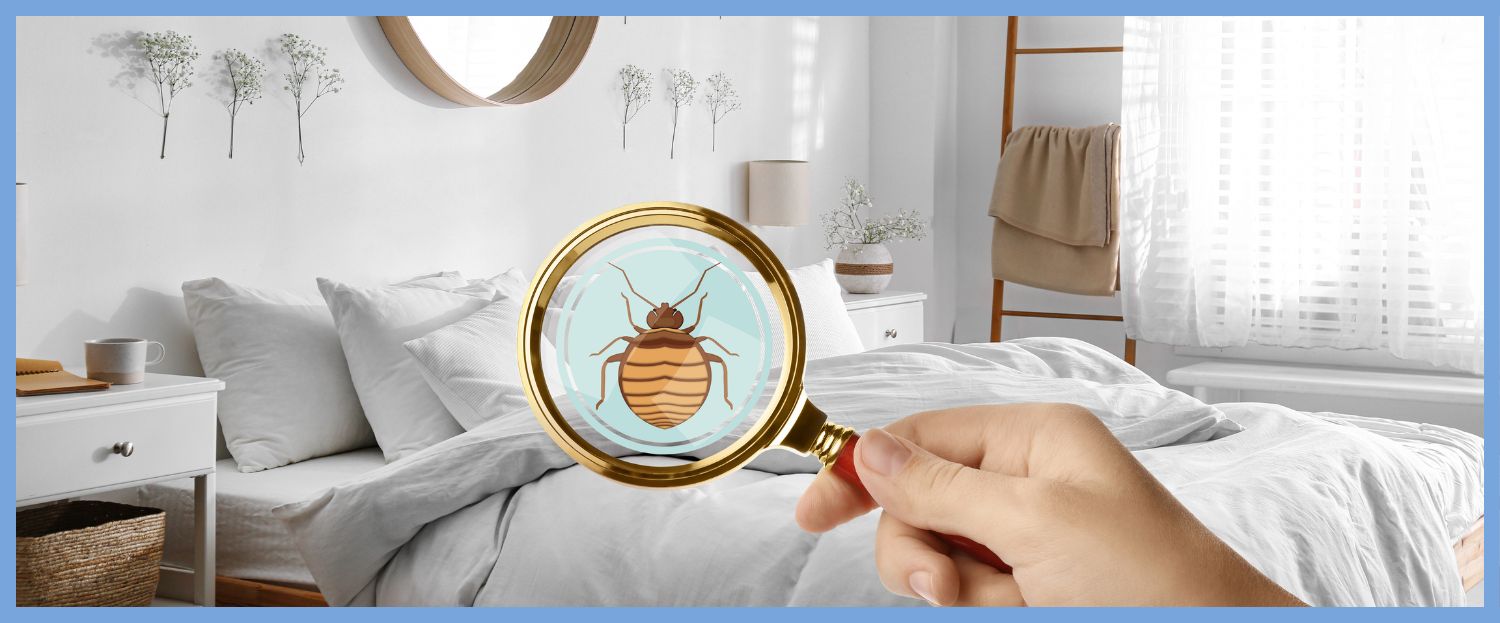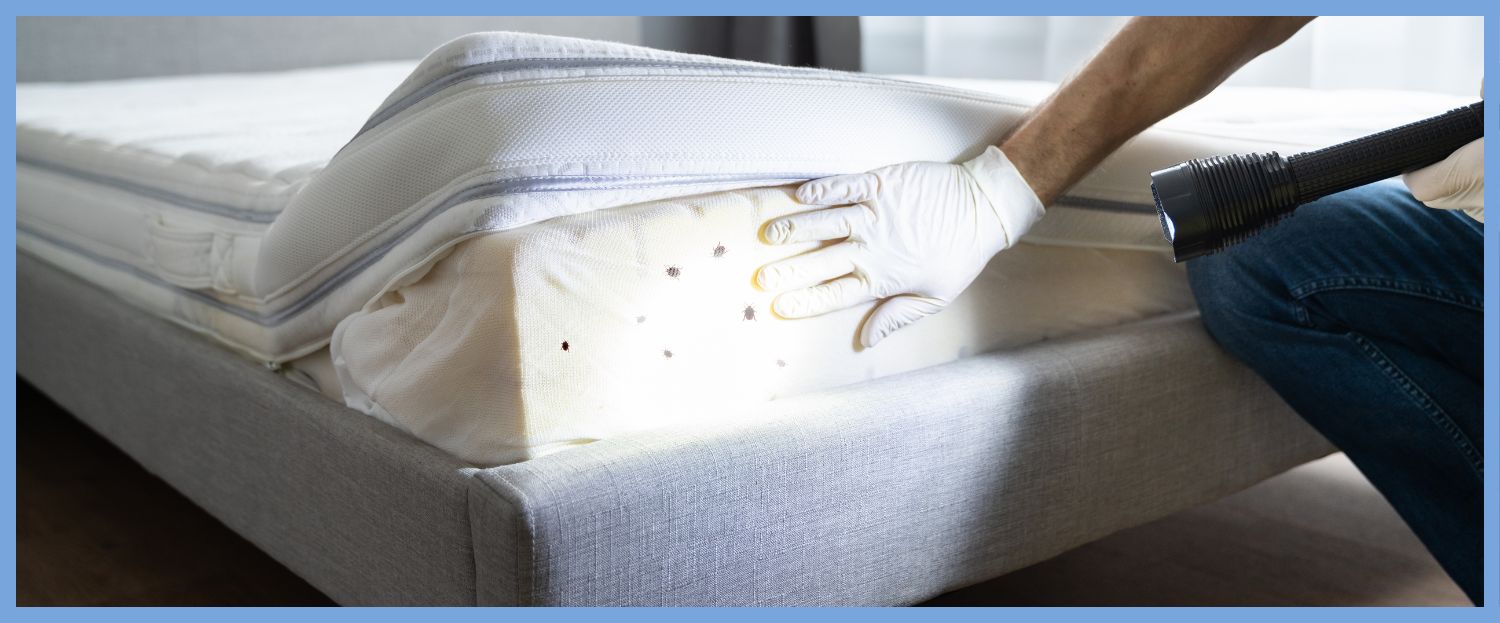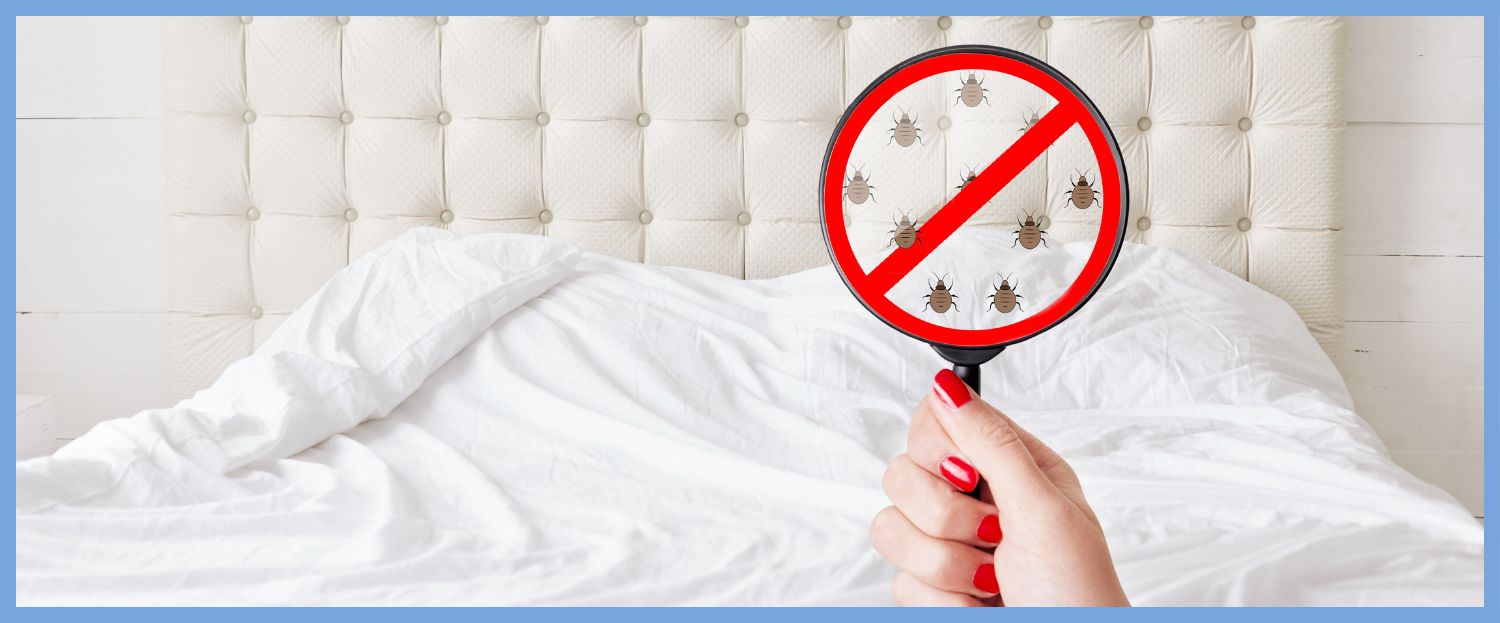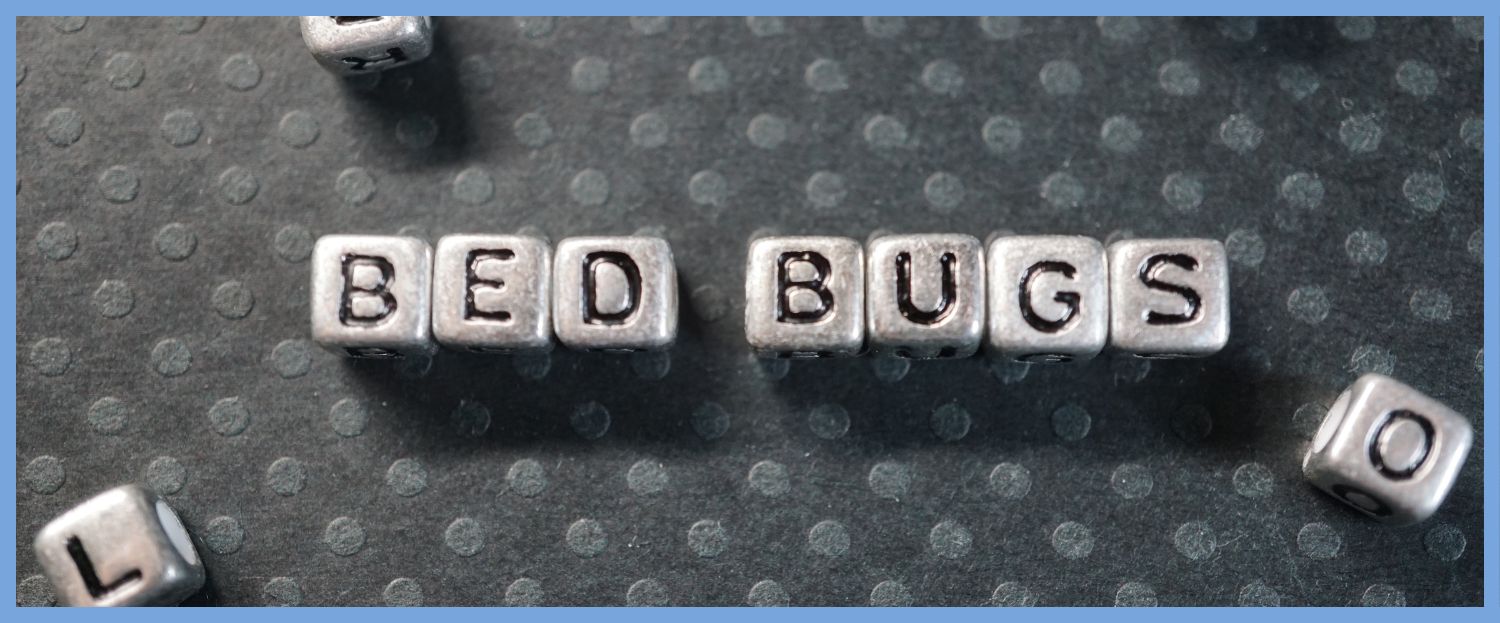Where Do Bed Bugs Come From & How to Get Rid?
Bed bugs: the mere mention of them might make your skin crawl.
Over recent years, the UK has witnessed a steady rise in bed bug infestations, turning these tiny critters into a topic of increasing concern. A pest control company in Bracknell, Berkshire said they saw a rise of 25% in increased call outs about the mites in 2022.
Despite their small size, bed bugs have a notorious reputation for causing distress and sleepless nights.
Before diving into solutions, it's essential to have a firm grasp of the problem. This article will offer a comprehensive guide on the origins of bed bugs, how to detect their presence, and, most importantly, how to banish them from our homes.
Understanding Bed Bugs: A Quick Primer

What are Bed Bugs?
Bed bugs, scientifically known as Cimex lectularius, are small, reddish-brown, oval-shaped insects. Despite their tiny size, typically about the size of an apple seed, they are visible to the naked eye.
Physical Characteristics:
- Size: 4-5 mm in length and 1.5-3.0 mm wide.
- Shape: Flat, oval body with a short, broad head.
- Colour: Reddish-brown, but they appear darker after feeding.
Life Cycle and Reproduction:
- Eggs: Pale yellow and minuscule, often found in tight crevices.
- Nymphs: Juvenile bugs that grow in size with each of the five moulting stages. They require a blood meal to advance to the next stage.
- Adults: Fully-grown bed bugs can live several months, during which females lay hundreds of eggs.
Common Myths Debunked
There are many misconceptions surrounding bed bugs. Let's clear up some of the most prevalent myths.
- Myth: Bed bugs only live in dirty places.
- Fact: Bed bugs aren't fussy about cleanliness. They're after blood, not dirt. Even the tidiest homes can face infestations.
- Myth: Bed bugs can't be seen with the naked eye.
- Fact: While they're tiny, adult bed bugs and their nymphs can certainly be spotted without magnification, especially when they gather in groups
- Myth: Bed bugs transmit diseases.
- Fact: While bed bugs can cause itchiness, irritation, and even some allergic reactions from their bites, there's no scientific evidence to suggest that they transmit diseases to humans. Unlike mosquitoes or ticks, bed bugs aren't vectors for harmful pathogens.
Origins: Where Do Bed Bugs Come From?

Historical Perspective
Bed bugs have been unwelcome companions to humans for thousands of years. Their presence has been recorded as far back as ancient Egypt, and evidence suggests that they've travelled alongside humans for millennia.
- Evolution: Originally, bed bugs were believed to feed on bats. As humans began living in caves and close quarters with these animals, these pests likely made the jump to a new host.
- Migration to Human Habitats: Over time, as human civilisation evolved and expanded, so did bed bugs. They hitched rides on various modes of transport, from ancient ships to modern aeroplanes, ensuring their widespread distribution.
Common Sources in Modern Times
The modern world, with its global travel and interconnected societies, provides an ideal environment for bed bugs to spread. Here are some of the most common ways they invade our spaces:
- Travel and Luggage: One of the most common sources. Bed bugs can easily hitch a ride in the seams of suitcases or in the folds of clothes, moving from infested hotels or accommodations to your home.
- Second-hand Furniture and Items: Buying second-hand goods is both eco-friendly and cost-effective, but it does come with the risk of introducing bed bugs. Always inspect used furniture, especially mattresses and sofas, before bringing them home.
- Nearby Infested Areas or Neighbours: If a neighbouring flat or home is infested, it's not uncommon for bed bugs to migrate through shared walls or communal areas, searching for a new food source.
Detecting a Bed Bug Infestation

Signs & Symptoms
Spotting a bed bug infestation early can save a lot of distress and discomfort. Here's what to look out for:
Bites and Reactions:
- Appearance: Small, red, itchy welts, often in a line or cluster.
- Location: Commonly found on exposed areas of the body, such as arms, legs, and neck.
- Note: Everyone reacts differently, and some might not exhibit any signs of bites at all.
Physical Evidence:
- Exoskeletons: These are the shed skins of nymphs as they grow. They're translucent and can often be found around mattress seams or crevices.
Faecal Spots: Tiny dark spots on mattresses or bedding, which are the droppings of the bugs.
Eggs: Very small, pale yellow pinpoints, often hidden in cracks or fabric folds.
Common Areas of Residence
Bed bugs prefer to stay close to their food source, i.e., us. Here are places they're most commonly found:
Beds and Bedroom Furniture:
- Mattresses: Particularly along seams and edges.
- Bed Frames: Especially in crevices and joints.
- Bedside Tables: Inside drawers and underneath.
Living Spaces:
- Upholstered Furniture: Sofas and chairs, especially underneath and in the seams.
- Curtains: Along the folds and where they bunch up.
Cracks and Crevices:
These can be in walls, skirting boards, or even electrical outlets. Bed bugs love to hide in dark, tight places during the day.
Prevention: Keeping Bed Bugs at Bay

Tips for Travellers
Travelling broadens the mind, but it can also inadvertently introduce bed bugs into your home. Before settling into a hotel room or any accommodation, do a quick scan. Focus on the bed, checking the mattress edges, bed frame, and headboard. If you spot any signs of bed bugs, request a different room or consider changing your accommodation.
When packing up, always inspect your luggage for any unwanted hitchhikers. It's a good practice to keep your suitcase off the floor, perhaps on a luggage rack, to reduce the risk of bed bugs crawling inside. Once home, wash your clothes immediately at a high temperature to ensure any potential stowaways are eliminated.
Safeguarding Your Home
Your sanctuary should be just that – a place free from pests and worries. Regular cleaning is one of the most effective deterrents against bed bugs. Vacuum frequently, especially around the bed area and any upholstered furniture. If you have a habit of buying second-hand items, be it furniture or clothing, always inspect them thoroughly before introducing them to your living space.
Consider investing in protective covers for mattresses and pillows. These encasements are designed to be bug-proof, ensuring that bed bugs can't enter or escape, thereby cutting off their access to their food source.
Remember, vigilance is key. By taking these precautionary measures, you significantly reduce the risk of a bed bug infestation in your home.
Treatment: Getting Rid of Bed Bugs

DIY Methods
Addressing a bed bug problem at its onset can often prevent a full-blown infestation. Here are some methods you can employ:
🔥 Heat Treatment: Bed bugs are sensitive to extreme temperatures. By washing infested clothing and bedding at a high temperature (around 60°C) and then using a dryer on a hot setting, you can effectively kill them. Similarly, handheld steamers can be used to treat mattresses, sofas, and carpets.
🧊 Cold Treatments: Placing infested items in a freezer for several days can also be effective. Ensure the temperature is set at -18°C or lower, and keep items in there for at least four days to make sure all life stages of the bed bug are eradicated.
🟢 Desiccants and Diatomaceous Earth: These substances work by drying out the bed bugs. Sprinkle diatomaceous earth (ensure it's food-grade) in areas where bed bugs are found. However, remember it can take time for this method to work, as it relies on the bugs coming into contact with the powder.
Chemical Treatments
While there are various pesticides available on the market, it's crucial to choose ones specifically labelled for bed bugs. Here are some points to consider:
🇬🇧 UK-approved Pesticides: Ensure that any product you use has been approved for use in the UK and always follow the manufacturer's instructions.
🦺 Safety Precautions: If using chemicals, always wear gloves and ensure the room is well-ventilated. Keep these products away from children and pets, and never apply them directly to bedding or areas where food is prepared.
☣️ Potential Risks: Pesticides can sometimes push bed bugs into neighbouring areas, only for them to return later. There's also the risk of bugs developing resistance to certain chemicals, making them harder to eliminate in the future.
Professional Extermination
If the infestation is widespread or if DIY methods prove ineffective, it's time to call in the professionals.
📞 When to Call: If you've tried multiple methods and still see signs of bed bugs after a few weeks, it's a clear indication that you need expert help.
📋 The Process: Exterminators will often use a combination of heat treatments, pesticides, and other methods to ensure all bed bugs are eradicated. They'll also provide guidance on preventing future infestations.
Recovery and Aftercare: Living Bug-free
Post-Treatment Precautions
Once you've tackled the bed bug issue, it's essential to stay vigilant to ensure they don't return. Some steps to consider:
🔍 Regular Checks: Even after treatment, routinely inspect your bed, furniture, and other previously infested areas. Look for any signs of a resurgence.
🗑️ Limit Clutter: A cluttered environment offers more hiding places for bed bugs. Keeping your home tidy reduces the chances of them finding a suitable refuge.
🛠️ Seal Entry Points: Examine walls, floors, and around windows or doors for any cracks or crevices. Sealing these potential entry points can prevent bed bugs and other pests from gaining access.
Psychological Impact and Support
Beyond the physical distress, dealing with bed bugs can take a mental toll. It's not uncommon for individuals to experience anxiety, stress, or even shame. Recognising and addressing these feelings is crucial.
👫 Seek Support: Talk to friends or family members about your experience. Simply sharing can alleviate some of the emotional burden.
📖 Stay Informed: Knowledge is power. The more you understand about bed bugs, the less intimidating and mysterious they become. Continue to educate yourself to feel more in control.
🧑🔬 Professional Help: If feelings of anxiety persist, consider seeking professional counselling or therapy. There's no shame in asking for help when needed.
Armed with knowledge, practical advice, and a proactive mindset, you're well-equipped to maintain a comfortable and bed bug-free living environment.
With this, we conclude our comprehensive guide on bed bugs, from understanding their origins to ensuring they don't return. Stay informed, stay vigilant, and remember: you have the tools to tackle any pest problem that comes your way.
Conclusion and Recap
Bed bugs, while small in stature, can present a sizeable problem for many households across the UK. As we've explored in this guide, understanding their origins, detecting their presence, and implementing effective treatments are all crucial steps in addressing and preventing infestations.
To summarise:
- Understanding: Bed bugs, known scientifically as Cimex lectularius, have been with humans for thousands of years. Despite common myths, their presence is not an indicator of cleanliness or the lack thereof.
- Origins: They can come into our homes through various means, from global travel to second-hand furniture.
- Detection: Early detection is vital. Look out for signs such as bites, exoskeletons, and fecal spots. Regular inspections of your living space, especially bedrooms, can be a significant deterrent.
- Prevention and Treatment: From DIY methods to professional extermination, there are multiple approaches to tackle an infestation. Prevention, such as regular cleaning and inspecting items brought into the home, remains a key strategy.
- Recovery and Aftercare: Post-infestation, vigilance is crucial. Regular checks, reducing clutter, and sealing potential entry points can help ensure a bug-free home. Additionally, acknowledging and addressing the psychological toll of an infestation is essential for holistic recovery.
Bed bugs can be a nuisance, but with the right knowledge and approach, they're a manageable one. Whether you're currently dealing with these pests or are keen on prevention, this guide offers the insights and tools you need to sleep tight without letting the bed bugs bite.
Thank you for joining us on this journey of understanding, and here's to many restful, bug-free nights ahead!




